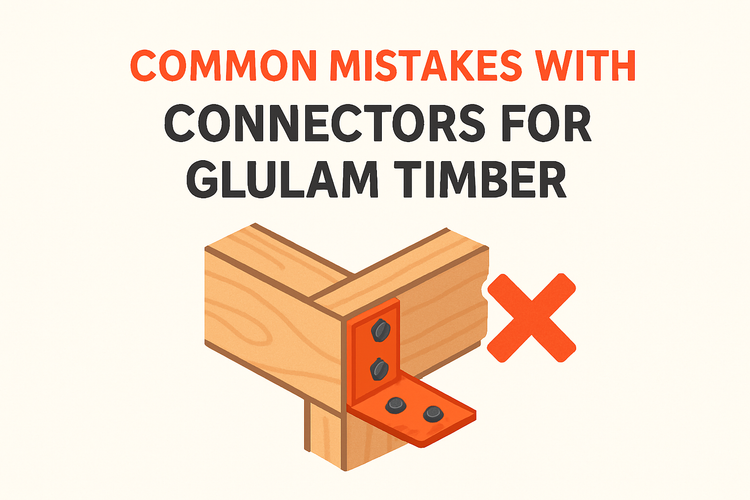Common Mistakes With Connectors For Glulam Timber For Timber Projects

Incorrect Fastener Selection
One of the most frequent mistakes when working with Glulam timber connectors is using the wrong type or size of fasteners. Fasteners that work well with solid sawn timber may not perform adequately with Glulam structures.
Glulam, due to its laminated nature, requires connectors and fasteners specifically engineered for its composition. Using undersized or incompatible screws and nails can compromise structural integrity and lead to long-term degradation. Special attention must be given to connector specifications, which often include recommendations for fastening types suitable for laminated timber. To ensure performance and prevent failures, always refer to manufacturer's guidelines when selecting Connectors for Glulam Timber and related fasteners from trusted sources.
Poor Alignment of Connectors
Alignment errors during installation compromise both aesthetics and structural stability. Even if the right connector is chosen, an improper fit due to alignment flaws can result in uneven load distribution.
The challenge here lies in timber movement, pre-drill accuracy, and the sometimes substantial size of Glulam members. When connectors are even slightly misaligned, it can lead to twisting, splitting, or increased tension in areas not designed to handle it. Frequent errors include setting brackets or plates off-centre or failing to account for Glulam's natural tolerances and expansion behavior.
Ensuring an accurate, measured approach to layout and predrilling helps eliminate these risks. Using high-quality installation tools and templates suited for Angle Brackets and frame connectors can simplify this process, reducing chances of human error.
Inadequate Pre-Drilling Techniques
Inadequate or incorrect pre-drilling is another major issue in timber connector projects. Pre-drilling ensures the laminate layers of Glulam timber remain intact during fastening.
When screws or bolts are driven without proper pilot holes, the internal layers may split or delaminate, significantly weakening the joint even if the connection appears structurally sound externally. In larger members, this can result in concealed but critical internal failures that are hard to detect until significant load is applied.
Skilled installers understand the importance of matching bit sizes to fastener diameter and drilling depth. Additionally, using construction-grade screws and nails appropriate for high-density timber is essential to avoid thread damage or loosening under load conditions.
Misjudging Load Path Requirements
Understanding load paths is essential in any structural timber design, and this is especially true for Glulam projects, where multiple planes and laminated layers combine under load.
Overlooking how loads travel through a structure can cause under-specification where supports are improperly reinforced. This mistake is common during connection design, where the wrong connector type or placement fails to channel forces efficiently through the structure. Errors here can result in sagging, deformation, or even catastrophic failure under stress.
Using properly engineered Post Bases in footings and vertical supports can improve load transfer efficiency and prevent stress concentrations. Make sure the connector matches both vertical and lateral force demands to ensure complete safety.
Ignoring Environmental Conditions
Environmental exposure is a frequently overlooked factor when selecting connectors for Glulam timber. The outdoor conditions a structure will face often dictate connector coating and corrosion resistance requirements.
For example, installations near coastal regions or in high-humidity zones should utilise treated or stainless hardware to prevent rusting. Even indoor projects can suffer if exposed to moisture variation, which may cause connector shift or wood expansion. Using inadequately protected connectors shortens the lifespan of the structure and increases maintenance needs.
Specifying weather-appropriate products from the High Wind ties & timber connectors or Glulam Timber Connectors ranges will enhance long-term durability and protect the investment in your timber project.
